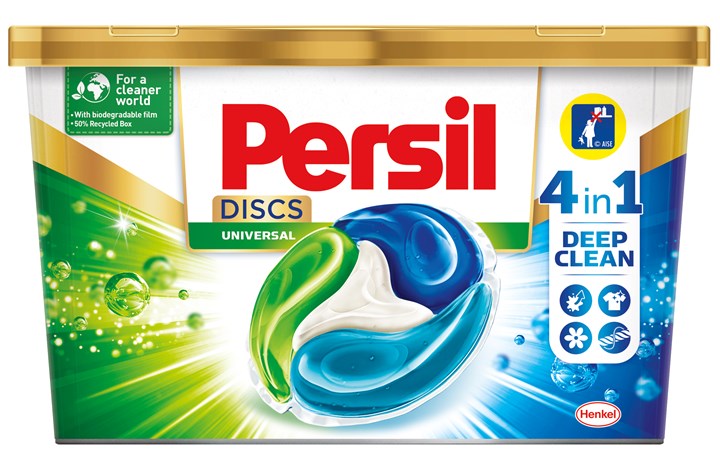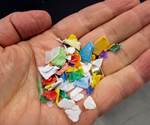Thermoformed Detergent Tub Now Contains 50% Recycled PP
Tub sits inside a recycled cardboard wrapper that permits a 40% reduction in the overall weight of plastic.
In the U.S., recycling of post-consumer PP has lagged far behind that of HDPE. Figures from the American Chemistry Council and Association of Plastic Recyclers total less than 515 million lb of PP in bottles and non-bottle rigid plastics in 2017, vs. almost 1.5 billion lb for HDPE. As I wrote recently, this is disappointing when you consider how versatile and widely used PP is, and the fact of periodic supply tightness and resulting volatile prices, both of which could be moderated by a more robust PP recycling stream.

In Europe, where the recycling rate for plastics packaging is more than three times that in the U.S., an inspirational example of post-consumer PP recycling is Henkel’s Persil laundry-detergent package. Made by Greiner Packaging in Austria, utilizing its K3 technology, the Persil package consists of a thermoformed PP tub containing 50% post-consumer recycle (PCR) inside a cardboard wrapper with 92% recycled content.
Greiner’s long-established K3 technology utilizes the cardboard sleeve to lightweight the plastic component (which can be either thermoformed or injection molded) by more than 40%. A patented tear-off system enables easy and complete separation of the two components for separate disposal.
In this case, the PP tub is thermoformed from two-layer sheet, so that the inside of the tub is white virgin resin and the outside is gray PCR, which is covered by the printed cardboard wrapper. Henkel, which has strong brands in laundry, home care, and beauty care, recently strengthened its commitment to the circular economy by stating plans to cut in half its use of virgin plastics from fossil sources by 2025.
Related Content
-
Understanding the Effect of Pressure Losses on Injection Molded Parts
The compressibility of plastics as a class of materials means the pressure punched into the machine control and the pressure the melt experiences at the end of fill within the mold will be very different. What does this difference mean for process consistency and part quality?
-
Back to Basics on Mold Venting (Part 2: Shape, Dimensions, Details)
Here’s how to get the most out of your stationary mold vents.
-
Three Key Decisions for an Optimal Ejection System
When determining the best ejection option for a tool, molders must consider the ejector’s surface area, location and style.






